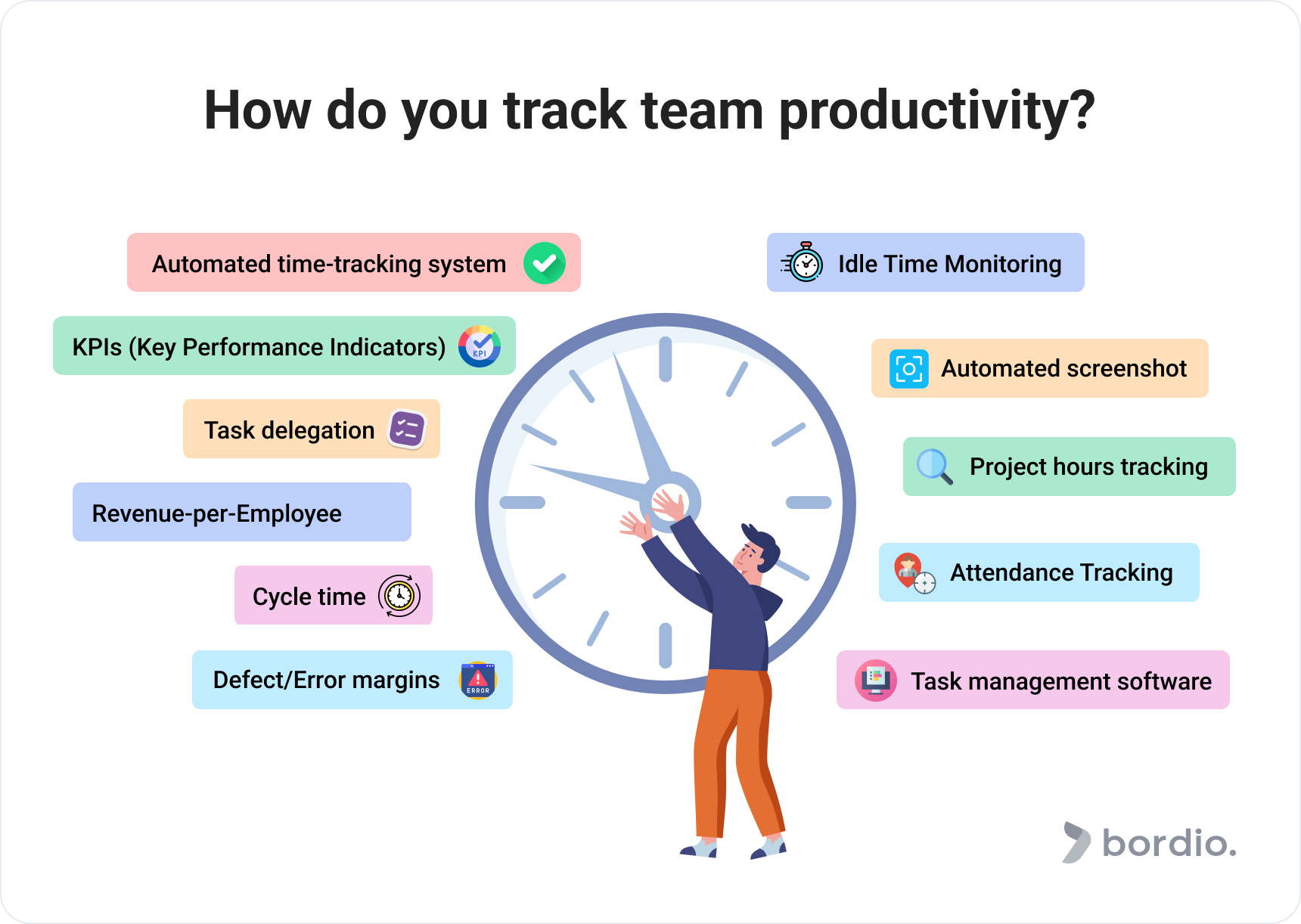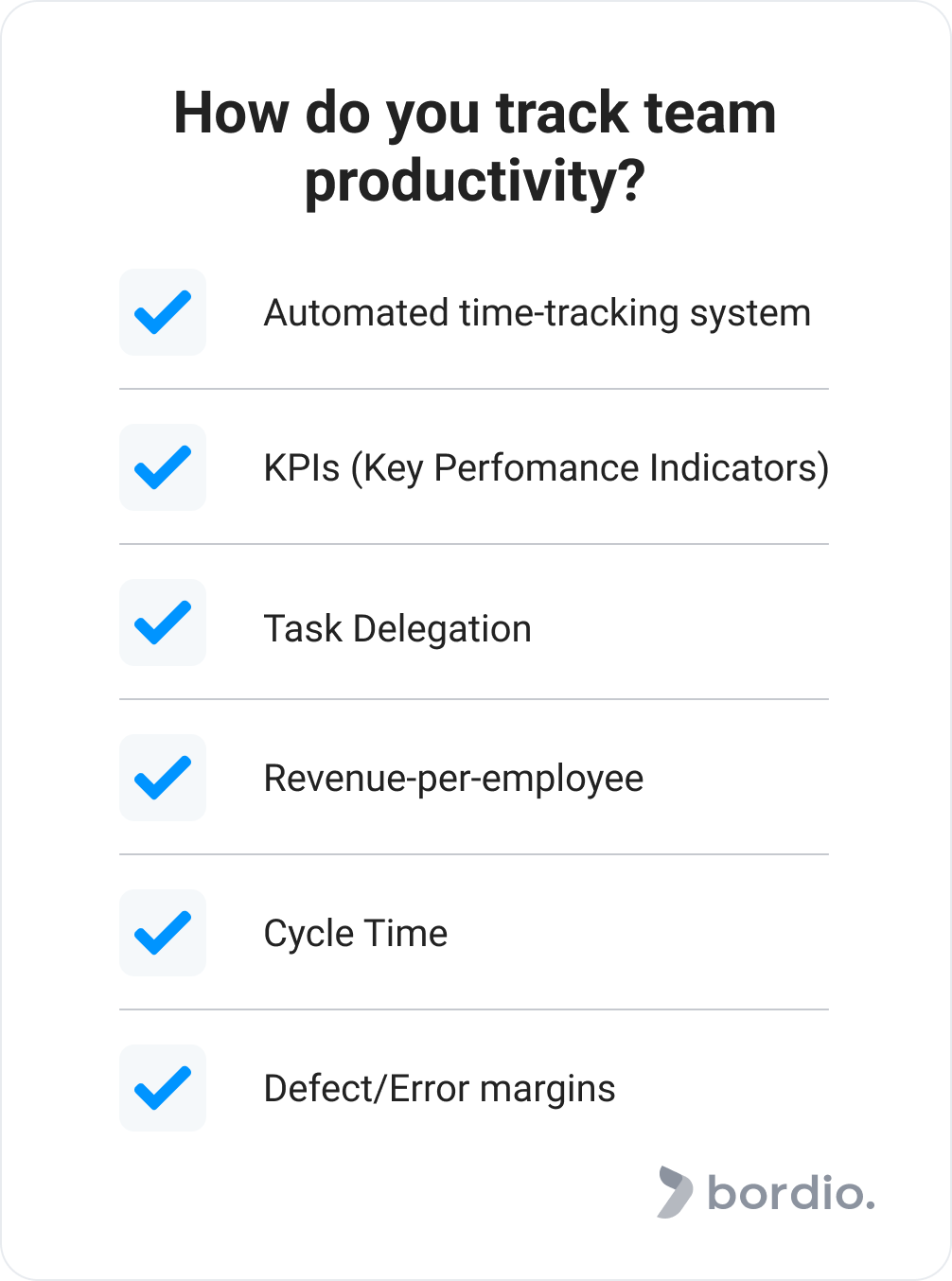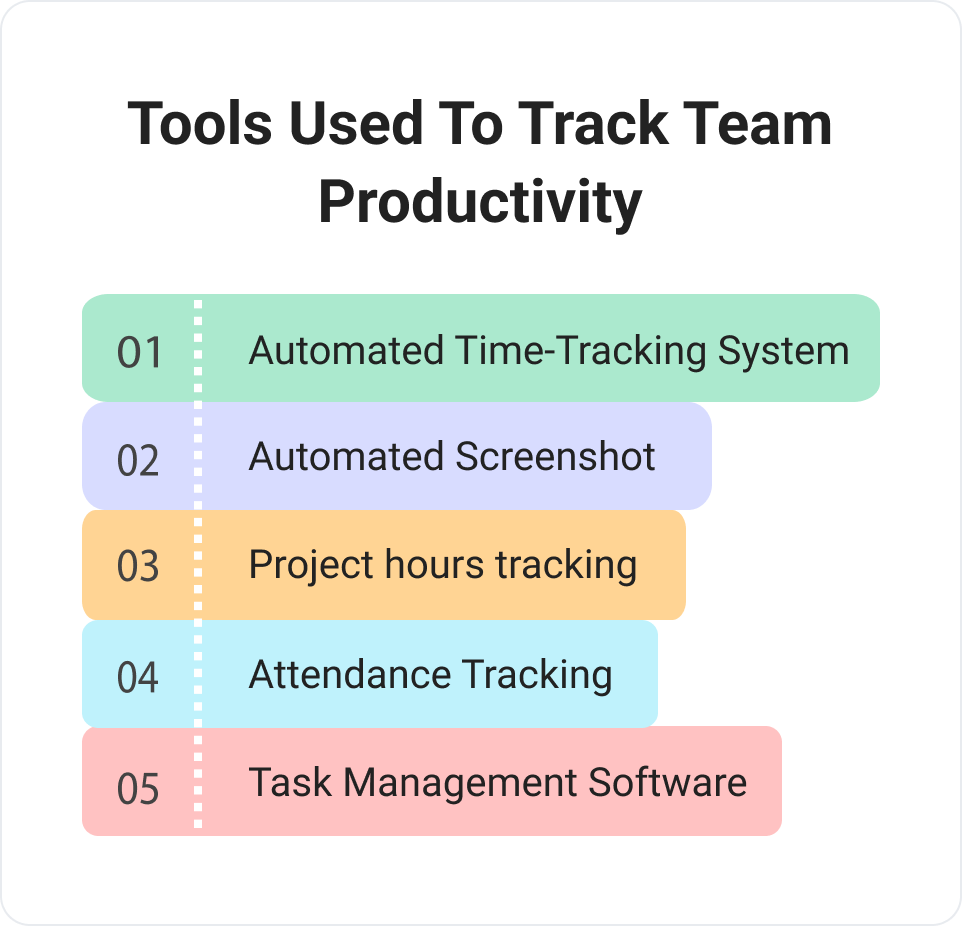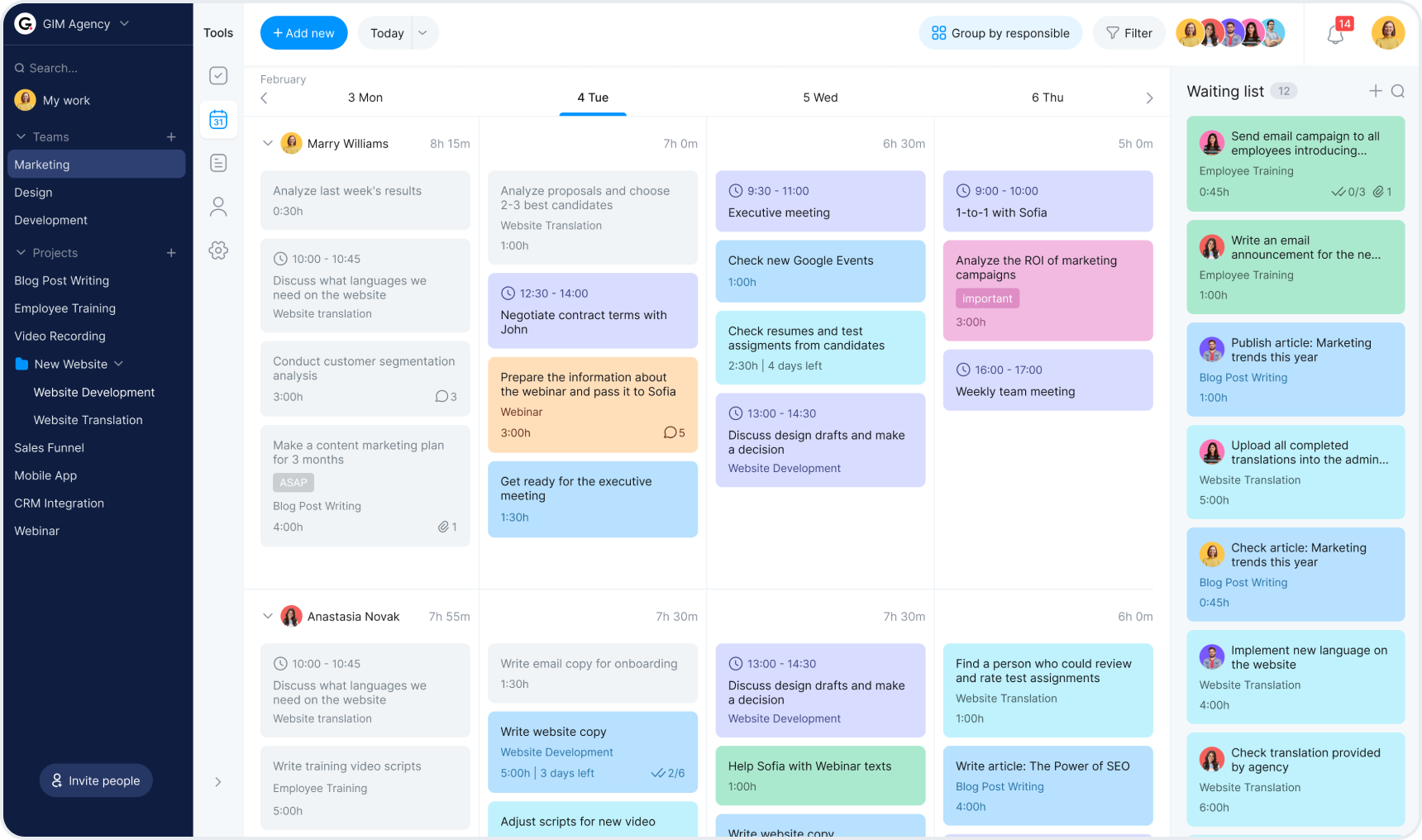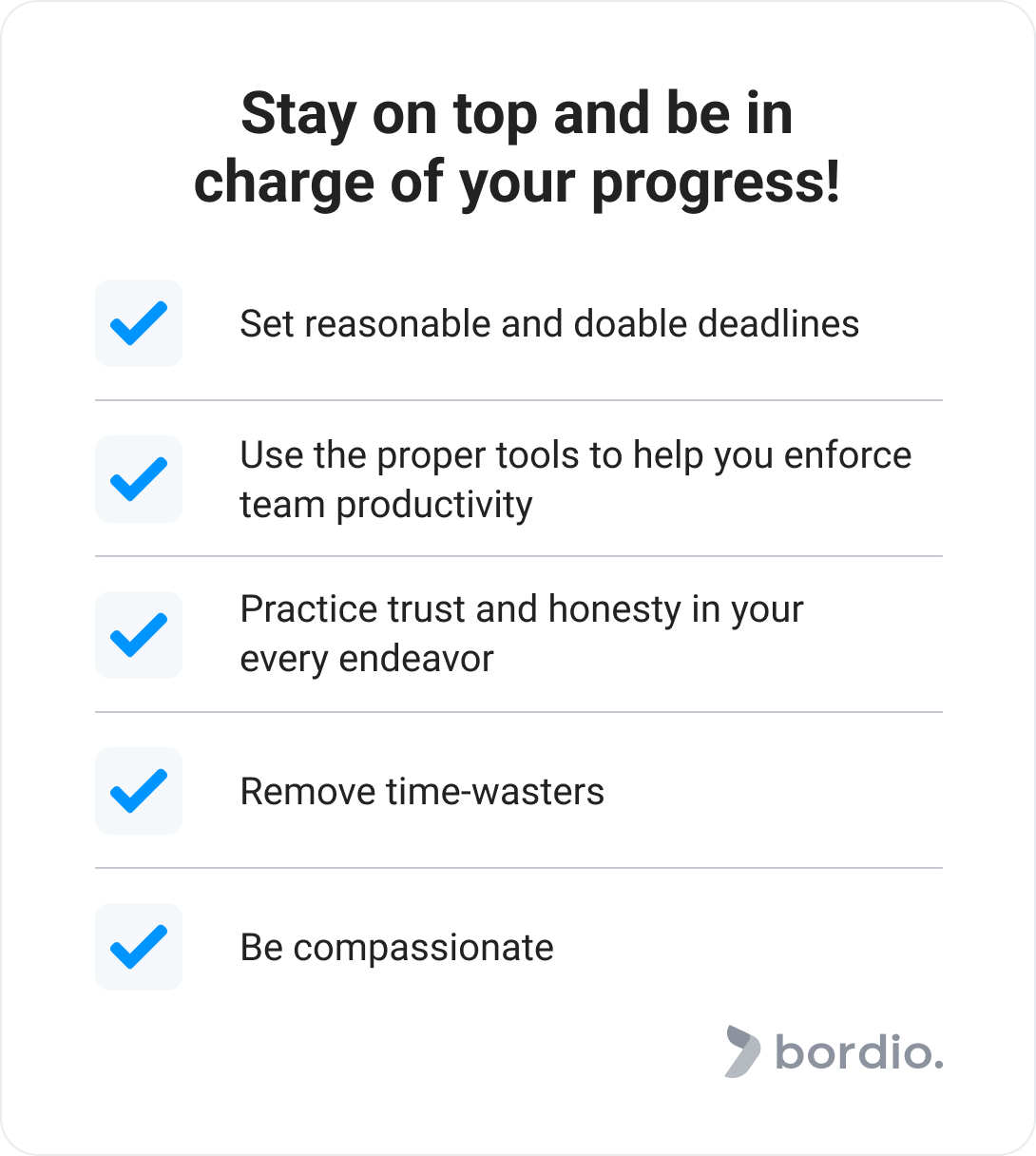Managing a team can be a headache and a cause of great concern for decision-makers, and most especially managers. That’s why having a productivity tracking system in place helps you get on top of your team and collectively achieve peak performance. But where do you start, and how can you actually track team productivity?
This article aims to answer all questions while providing you with the relevant insight and information you need to understand further how and why team productivity tracking is crucial to your organization’s overall success. It also includes tools that may benefit you as you measure employee engagement and team productivity.
Continue reading to find out more!
Why is team productivity tracking essential in a workplace?
Whether it is through the use of time management tools or other tried-and-tested methods for monitoring employee productivity, team productivity tracking is essential in assessing a department’s overall performance. At this point, it’s not just employee performance that counts, but it’s a collective effort to ensure that tasks are delivered promptly.
The entire team is being monitored and deliberated to ensure that each team member functions well and contributes to the betterment of the entire group. Conversely, team leaders can use this to track productivity gaps in key areas that need further improvement. It also serves as a valuable tool for identifying how many employees perform at par or below the given productivity metrics.
With further analysis and careful consideration, team leaders and strategists can come up with better processes that will find the right solution to ensure that team performance remains consistent and to also promote work-life balance for employees in such a way that through the findings gathered from tracking productivity. More employees can be encouraged to work smarter and more efficiently to ensure that all resources are utilized properly and to improve employee productivity overall—nothing missed and nothing wasted.
We can look even further and justify the importance of why you should measure team productivity as condensed in the following reasons:
- Instilling accountability to your team members – Now that more employees yearn for remote work as a means to establish work-life balance, accountability might be hard to enforce and can be a cause of concern for employers with their remote work teams. Putting a productivity tracking system in place helps you figure out bottlenecks, if any, and improves employee productivity by delegating tasks better.
- Allocating resources better to all of your team members – Tracking productivity ensures that employers and team managers can allocate different tasks and resources to their team members more efficiently. This allows employers to screen talents that may seem underutilized and deploy them in different tasks or areas of your production to optimize further and synchronize your team.
- Evaluating team’s overall performance – One of the best parameters for measuring team productivity is having employee monitoring systems in place. As we mentioned earlier, it can help address areas that need improvement while also recognizing the high performers on the team.
- Transparency with data and collaboration – Monitoring tools not only measure a team’s productivity for the sake of gauging productivity per se, but they’re also a great way to enforce transparency in terms of reporting data to your team. This empowers your team to have an improved approach in scheduling and reporting when they see figures to justify supplementing their tracked productivity.
How do you track team productivity?
Let’s look at some examples of how each technique or methodology differs and how they can benefit other teams as you measure employee productivity. At most, the techniques and metrics we mentioned below are tried and tested and have been applied by most successful organizations to monitor productivity.
- Automated time-tracking system – tracking the time spent on different tasks ensures that you track the progress of every individual employee in your team. It’s also one of the most fundamental methods of tracking employee productivity. Through this approach, your employees have to log their hours accurately so you can not only measure productivity but also help with employee monitoring. Employers can understand how every employee spends their working hours and analyze user activity during a given time period.
Time-tracking can be applied to a broader setting, such as an entire team or department, so that decision-makers, especially middle and upper management executives, can deliberate about the overall performance of a particular team and decide how to improve efficiency in outputs.
- KPIs (Key Performance Indicators) – key performance indicators are one of the more tangible aspects of employee productivity tracking. They contain quantifiable criteria reflecting progress for specific tasks or goals. It may also involve a certain productivity score or quota to be met to further quantify individual team members’ performance and the overall performance of the entire department.
When applying this on a larger scale, such as a team or a department, some of the smart goals included in these metrics may include sales targets, customer satisfaction, and timeliness in project completion. When compounded altogether, management can identify areas needing development or fine-tuning.
- Task Delegation – whether it’s through advanced software or just a simple spreadsheet, there are plenty of task planner applications and software that managers can use to measure productivity and track overall team and employee productivity. Task delegation allows you to organize and prioritize tasks while allowing you to track the progress of individual employees from your team. They are usually applications or as simple as a whiteboard (for teams who still use an analog approach), giving more insights into their overall performance.
- Revenue-per-employee – This type of team and employee monitoring metric often applies to a sales or marketing team. It aims to better understand the team’s ability to generate sales or revenue. There is a known formula when computing this, and it goes as follows:
Revenue per Employee = Revenue ÷ Current number of employees
Simply put, you have to divide the entire revenue the team produces with your team’s current line-up. Following this metric can give more quantifiable results that decision-makers can use to compare departments and see which is more productive than the other.
- Cycle Time—This is not to be confused with a desktop time tracker that tracks an employee’s actual work hours. The cycle time method measures the average time needed to complete a particular service or product. This method is most applicable in factories with assembly lines, as in theory, the shorter the cycle time, the higher the productivity level may be.
While it’s not used within the same industry, it can still be adapted for many possible uses. For example, managers can compute the average time it takes for an employee to finish a delegated task (while considering various factors such as difficulty and work environment). The formula used to exact a task’s cycle time is computed like this:
Cycle Time = Net Production Time ÷ Number of Tasks Completed
While this may not represent all of the aspects of team and employee productivity, it can still be a useful tool for managers to better understand how employees fulfill their roles and whether they are effective in carrying out these tasks.
This can also help identify patterns as you measure your team’s productivity further. As you explore further areas, managers can identify areas of improvement, which can be used when troubleshooting problems and fixing bottlenecks.
- Defect/Error margins – With this productivity approach, managers count the number of mistakes (or defects) the team has incurred in a given period. While these are often seen employed in development teams such as in programming and manufacturing, the data provided from this method allows managers to gauge further what has caused these mistakes, oftentimes it can be performance issues, application errors, or even user-experience problems.
You can also extract the defect escape rate in connection with escaped defects or error margins. This can be determined by collecting the number of defects during the pre-production and production phases. A higher rate probably indicates a problem with testing processes or testing tools. Meanwhile, a lower rate may signify that the processes function as they should.
While managers may deem it only applicable in programming and manufacturing settings, you can use this method to evaluate marketing concerns, such as the number of client issues or complaints and even ineffective or poorly performing social media campaigns.
Tools used to track team productivity
There are hundreds of productivity-tracking software readily available online, each with its own strength and niche industry to serve. However, to help managers categorize which tracking tools would work best, the tools presented below are divided into main segments so that they can easily determine which productivity tools work best for them in tracking performance. Let’s look at each one.
- Idle Time Monitoring—instead of monitoring the actual productive time an employee spends in a given workday, idle time is also a better metric for measuring productivity, as managers and decision-makers can examine how team members properly manage and utilize their time during work hours.
Managers can easily see and distinguish any productivity gaps and provide additional training if needed to address these potential problem areas that may impact productivity.
- Automated Screenshot—while this may feel obtrusive for some employees, this method automatically captures screenshots of the employee’s work screen. These screenshots serve as quick visual evidence for managers to see if employees are indeed focusing enough and utilizing their hours well. With this method in place, employees will be motivated to maintain focus and productivity throughout their work hours.
However, some points for consideration will be raised when employing this method, such as fairness and the right to privacy of team members.
- Project Hours Tracking – applications that track project hours allow team leaders and managers to calculate the time needed to complete a project. For this method to be successful, the team manager should collaborate closely with their team members and monitor and plan all tasks efficiently so that the project is on track for the proposed completion date.
- Attendance Tracking – plenty of tracking and productivity apps incorporate this as an added feature when it comes to team productivity tracking. This is also conducive for remote teams as they can mark their attendance easily so that managers can monitor their presence efficiently.
Managers can also check the team’s overall attendance analytics, including team members’ individual attendance, to easily identify and address attendance issues and ensure that the team’s total productivity score is consistently met.
- Task management software – having a dedicated task management tool, such as Bordio’s task tracker, makes overall team and employee management a breeze. You can easily track progress, allocate tasks, and provide feedback easily when operating in a remote setup.
You can also provide easy access to data that your teams can use. This allows for better workflow management, as everything is seen at a glance.
Impact of team productivity on an organization overall
When we talk about your team’s productivity, it doesn’t just end in getting more things done or ticking off tasks from your to-do list. On a larger scale, it also focuses on how your team performance can directly impact or benefit your company’s financial standing all in all—whether it involves saving more from fewer resources consumed or perhaps ramping up earnings because of overall positive client response as a whole.
Let’s look at some of those possible impacts in further detail.
- Efficiently saving up on resources – When you track employee productivity in your team as a whole, you can start utilizing your team members in a much more efficient fashion. In turn, you get more value from the same resources you get—this, when compounded longer-term, will result in bigger and better savings on the corporation’s end.
- Creating a competitive edge against the competition – When you see excellence and quality in your overall team, team members work better, resulting in the project’s success. That is the competitive edge you can get that your competitors can never take away from you.
- Driving customer overall customer satisfaction – This logic is rather simple. When your team is highly productive, the clients appreciate them even more, as this uptick in productivity can also benefit their enterprise as clients. It boosts both client and employee morale, seeing that productivity, in turn, drives revenue growth even further.
Challenges a team manager faces in managing their team’s productivity
Having common metrics in place ensures a seamless workflow while allowing management leaders to measure productivity in every business. However, the actual implementation process is easier said than done. Despite the many project management tools at your fingertips, a manager may face numerous hurdles and setbacks as they measure team productivity.
Let’s look at some of these hurdles in greater detail:
- Lack of coordination with team members – Setting up tools for employees to follow as a way to measure their productivity score may be discouraging for some managers as it’s easy for all employees to coordinate and may even encounter some problems along the way when close evaluation and tracking may be included along the way.
The best way to avoid this is to have open communication among teammates, build their trust, and get to know them personally further to understand their background thoughts and feelings regarding this.
- Lack of ownership from team members – since a lack of collaboration may arise from team members, employees could disregard accountability and ownership in their tasks. This could be avoided by making them see the bigger picture and explaining how their work greatly impacts the business’s overall operation.
The feeling of belongingness and community should constantly be reminded to team members because it’s only then that they realize that the roles they enact do matter and can constantly motivate them to perform and give back.
- Lack of communication – When you don’t have enough employee engagement among your team and don’t properly verbalize how processes should be enforced, there will be misunderstanding that can cause tensions to rise and apathy to persist.
Getting your team involved right from the start while being transparent with the plans and the entire process will make them more interested and likely to participate in this endeavor.
Tips on effectively tracking team productivity
To ensure that employee engagement and productivity scores are constantly being delivered through team productivity tracking, here are some tips that you can follow to help you stay on top and be in charge of your progress.
- Set reasonable and doable deadlines. Ensure that each goal is actionable and that there are clear expectations from both management and employees.
- Use the proper tools to enforce team productivity. This may include the right software or applications for you and your team members. Bordio, for example, allows for effective collaboration and monitoring of your team’s productivity, all in readily accessible and easy-to-use software.
- Practice trust and honesty in your every endeavor. Trust and honesty should be practiced at all times for workplaces to thrive and become a healthy environment of productivity for employees. That means less micromanaging, providing frequent and encouraging feedback, establishing clear goals, and constantly nurturing skills through coaching and mentoring.
- Remove time-wasters. Whether it’s disabling apps that may impede productivity or restricting access to websites that may take up more time in an employee’s bandwidth, you must carefully sift through any potential detours that can affect your team’s productivity.
- Be compassionate. Understand that not all employees can achieve a high productivity score or do everything in one go. When you show compassion, empathy, and gratitude to your co-workers and employees, they are more likely to follow through and collaborate with you.
Final thoughts on how to track team productivity
Enforcing team productivity tracking may be a huge challenge for most team leaders and decision-makers. Having these points in mind can give you the motivation you need to pursue this prerogative.
It may be difficult at first, especially given some of your co-workers’ apprehension about the very idea, but with constant support and communication, nothing is impossible. Having the right tools, such as Bordio, will also help you carry out your goals, making processes within your organization seamless and more efficient. At the end of the day, it is through mutual collaboration that a team can thrive fully.

